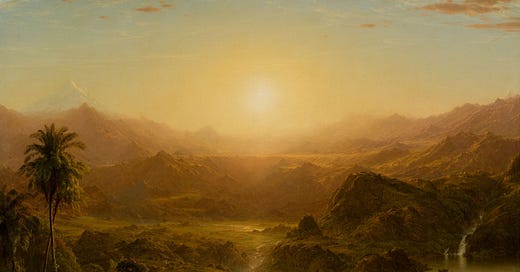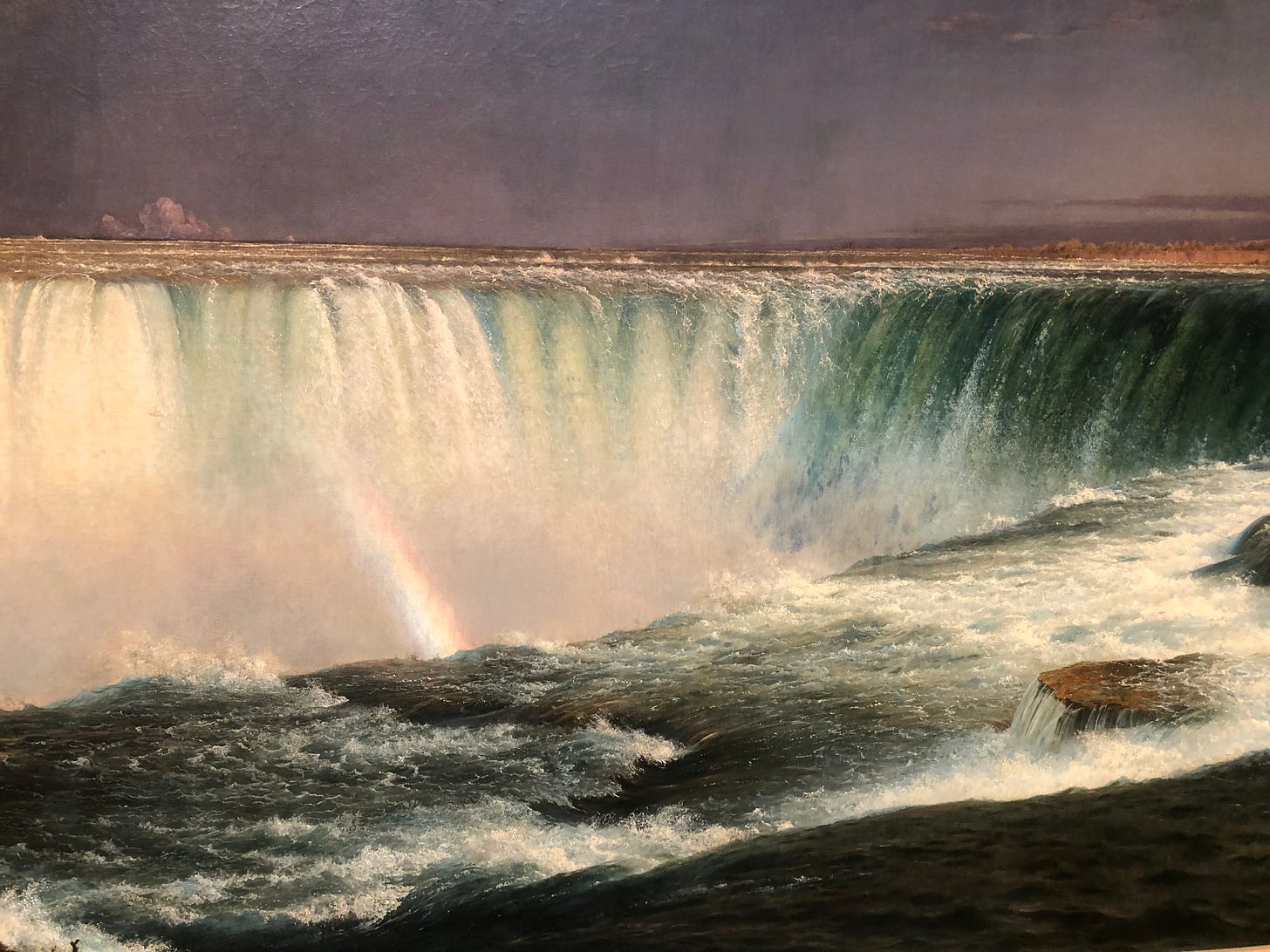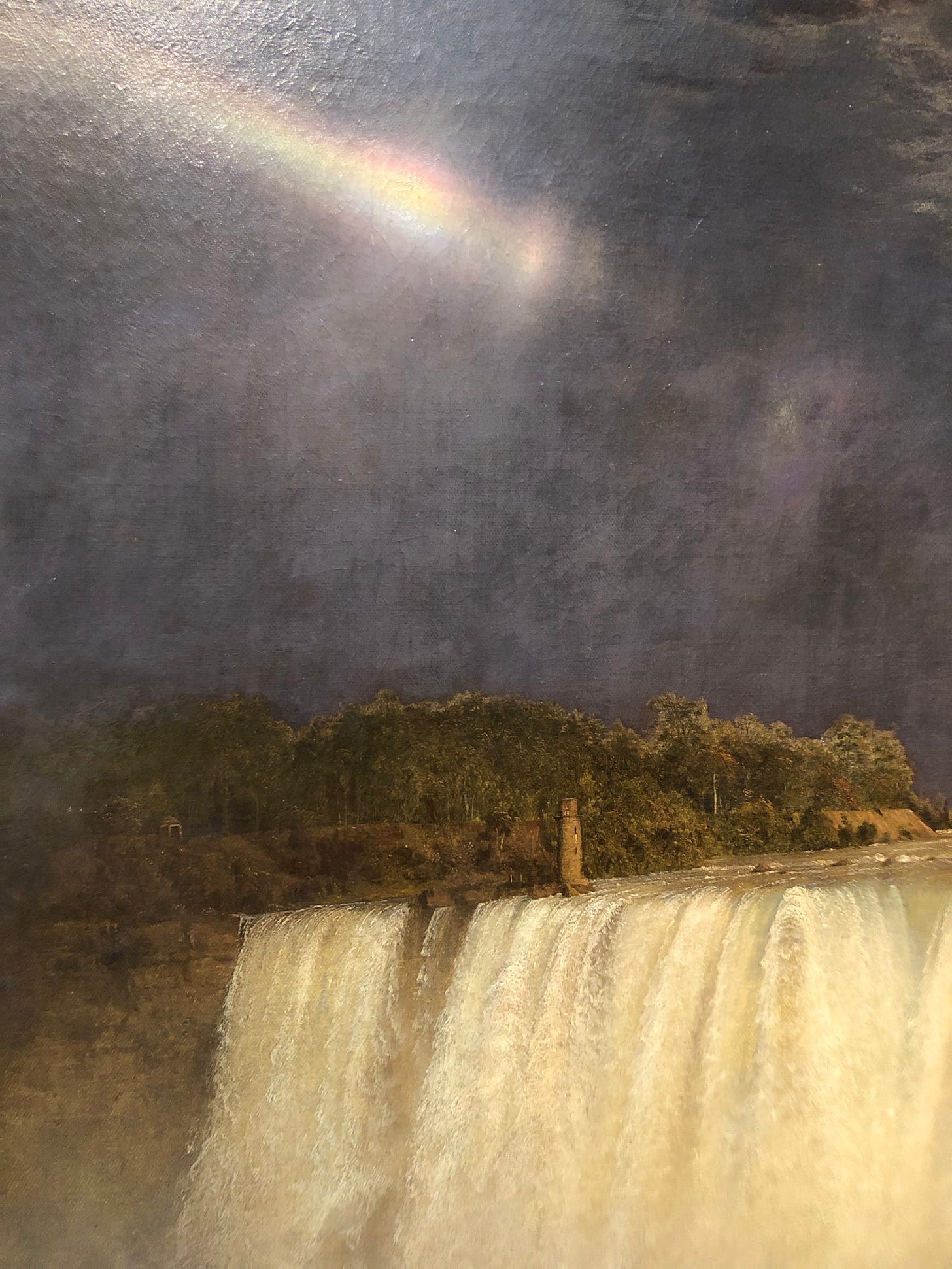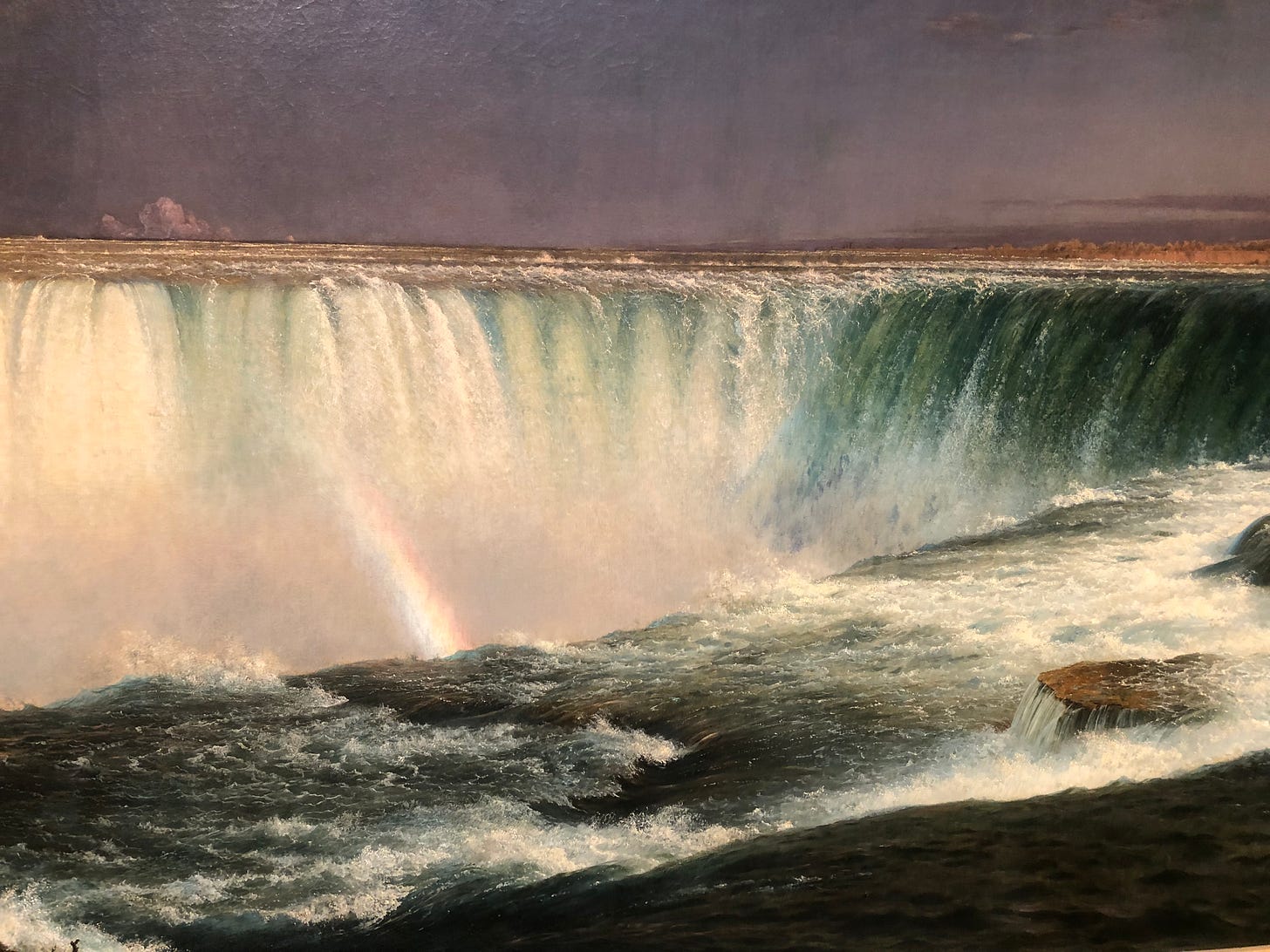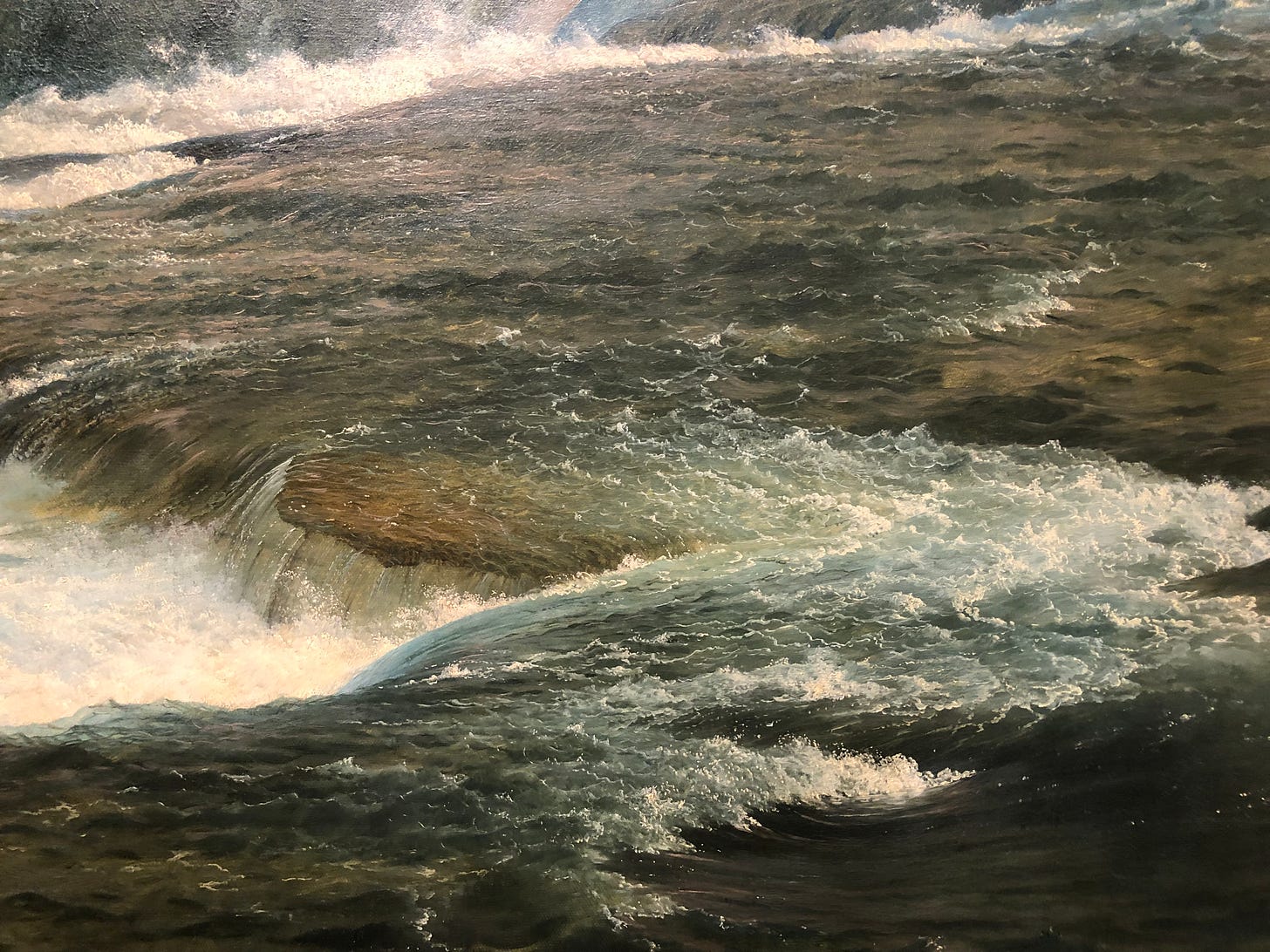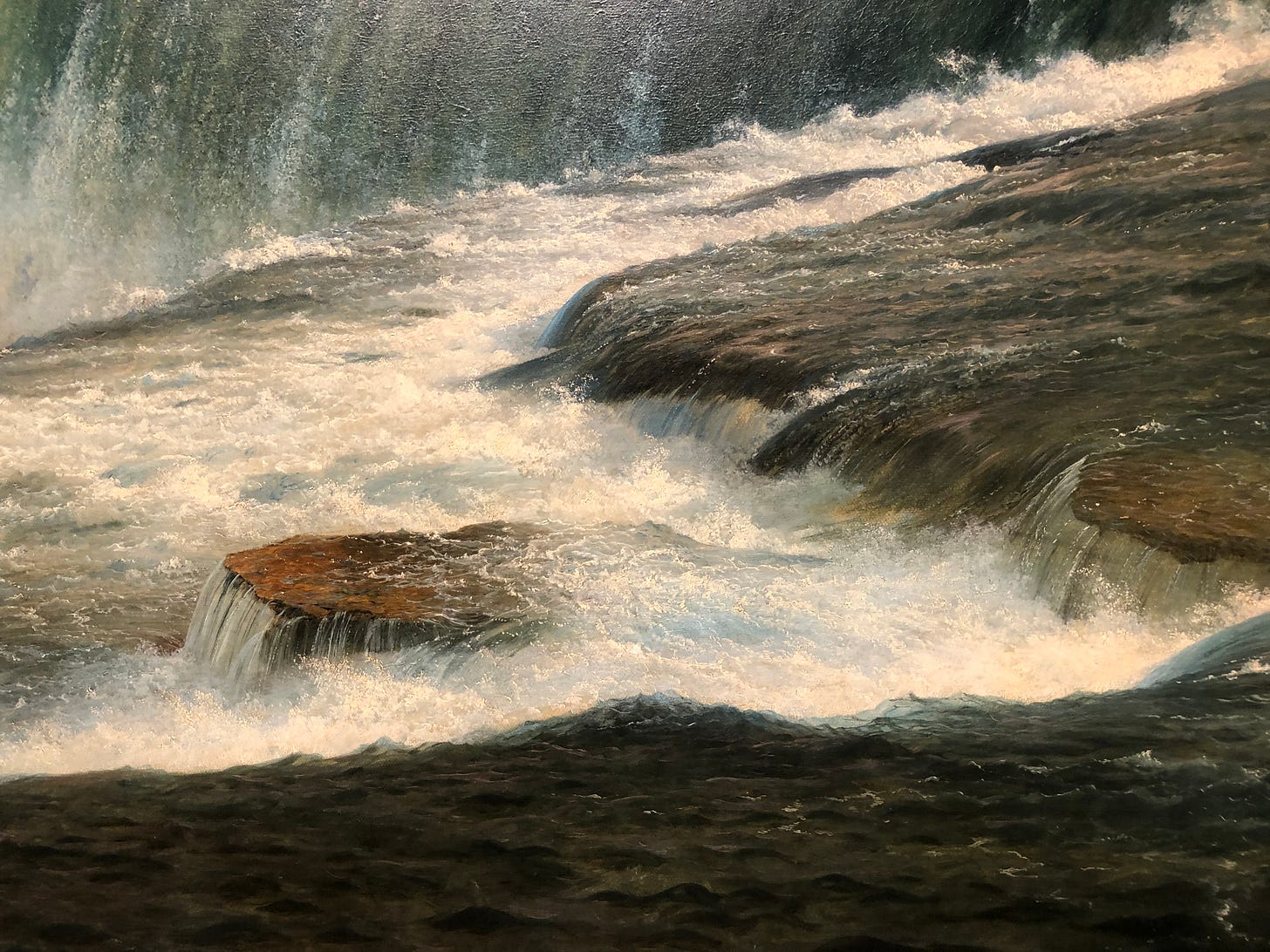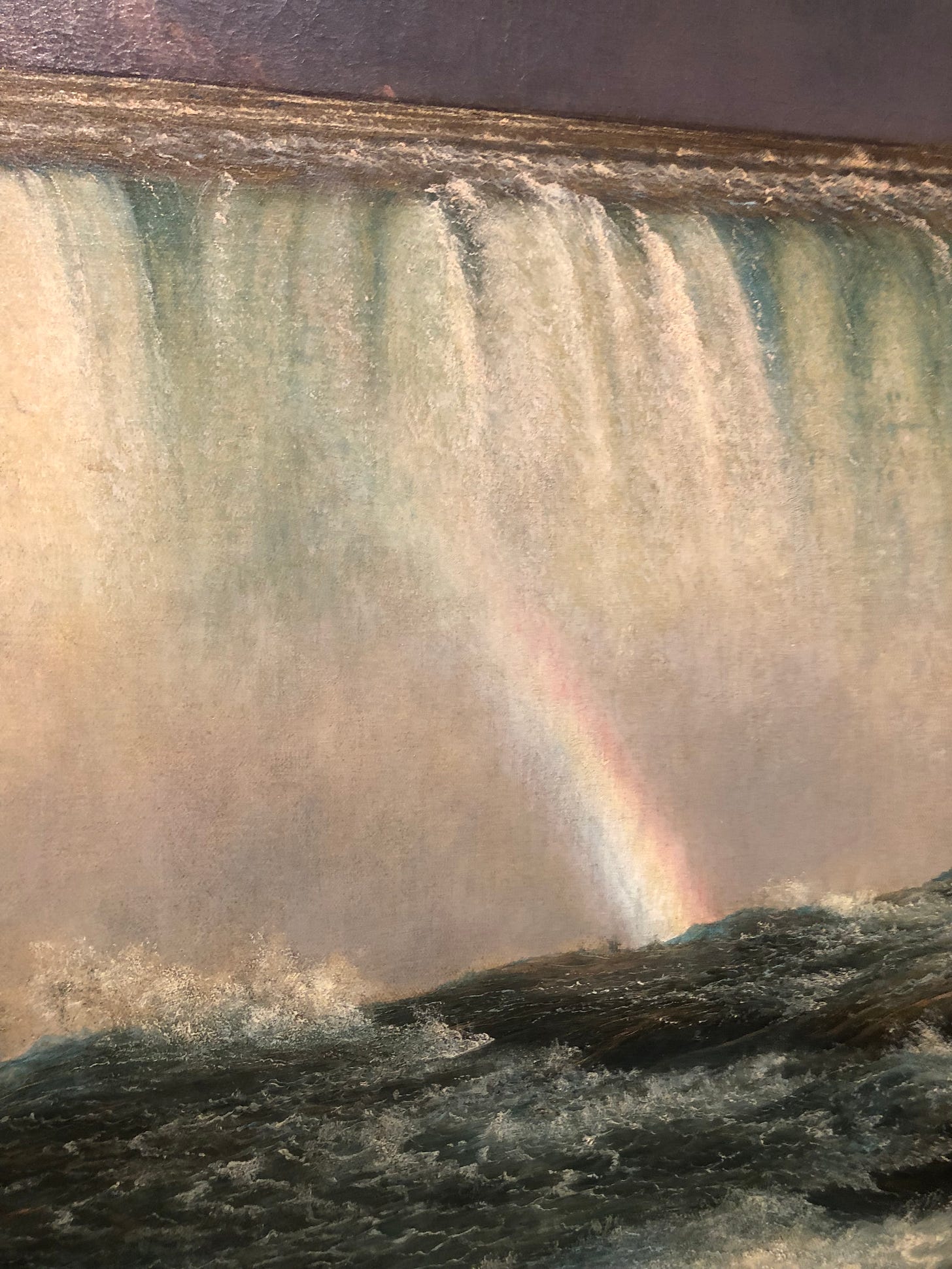The Andes of Ecuador by Frederic Edwin Church, 1855
Frederic Edwin Church
[click to read]
The story is told of a moment in the North Carolina mansion of Richard Joshua Reynolds, American businessman and founder of the R.J. Reynolds Tobacco Company. One of the family’s small children was staring intently at an extremely large canvas in the family parlor. His mother asked him what he was admiring in the painting. He responded: “I’m looking at the church.” Indeed, he was staring at “The Andes of Ecuador,” a painting by the great artist Frederic Edwin Church. Thinking the child had become aware of the great artist at such a tender age, she joined him in examining the artwork—only to discover the red-tile-roofed chapel that was a tiny detail in the vast painting. That was the “church” the child was drawn to. Frederic Church’s epic paintings ended up in the grand homes of wealthy patrons, who probably missed much of the detail in the paintings they had purchased. The sheer volume of subtly rendered detail probably required “a little child [to] lead them” (Isaiah 11:6). Truthfully, Church was a very spiritual person, and his work reflected a sense of the unseen hand behind the scenery he so beautifully rendered.
Frederic Church learned much from Prussian naturalist Alexander von Humboldt, who had written about South America and encouraged painters to go and capture the beauty of the New World. Humboldt was one who valued field sketches in his own work, and Church took that to heart. In his own travels, he would make many small “preparatory works.” He never did his large canvases plein air (on-site in the open air) but rather constructed and completed the works from his copious field studies. Working slowly, he would usually complete one of his large canvases in the course of a year. His smooth, luminescent skies are the result of his smooth, patient blending of layers of oil paint. He frequently painted the golden glow of morning or evening. (read more)
*The story of the child and the painting was related to me by Ed Hendricks, Professor of History at Wake Forest University. It has since been proved to be apocryphal, as the painting was not acquired by Reynolda House until the 1960s.
Frederic Edwin Church’s Niagara
Niagara, Oil on Canvas, 1857 by Frederic Edwin Church (40.0 in × 90.5 in)
"Of the hundreds of paintings made of Niagara, before Church and after him, this is by common consent the greatest." — Historian Pierre Berton
The painting is enormous — 7 1/2 feet wide. The artist, working from sketches completed the mighty work in his studio, taking a full year to complete it. He made about five trips to Niagara, making numerous pencil drawings and oil sketches before he began.
Not only was the painting exhibited in New York, it toured England and Scotland. Gallery visitors could even buy a print of it, produced by a process known as Chromolithography, where a series of impressions were made to achieve a color copy of the original.
But there was no substitute for seeing the actual work, with all of its incredible detail. Any reproduction fails to do it justice.
Details of the painting show Frederic Church’s incredible ability to capture water, mist, and sky.


